Onirim
Onirim is not only the smallest game we’ll be writing about in this post but it’s also the oldest in my collection. And there’s a good reason for it. It’s absolutely amazing!

In Onirim you are a dreamwalker, trapped in an ethereal labyrinth, searching for 8 doors that will free you from slumber. However opening the doors isn’t exactly a walk in the clouds. On your turn you’ll play cards from your hand, forming a single row of dreamy labyrinthine rooms. The object is complete sets of three matching coloured cards, but each new card you lay down must have a different symbol to the previous one – either a sun, moon or key. If you manage to get the colours and the sequence to work, you’ll discover one of the doorways you’ll need to escape the dream world.
Getting the correct sequencing of labyrinth cards may sound tricky, because it is, but as you play cards onto the labyrinth track you’re also refilling your hand, which always gives you an option of where to go next. However, scattered throughout your draw pile are ‘nightmares’, waiting to disturb your peaceful sojourn. Nightmares eat away at the cards in your hand and deck, forcing you to discard precious pieces of the puzzle and ultimately making it more difficult to escape. There are ways of fighting the nightmares (like holding on to ‘key’ cards) but the skill is to carefully manage your hand while simultaneously digging deeper into this dreamy labyrinth.

Onirim is a perfect blend of challenging game play and addictive fun. Every game will have you locked in the dream world and you’ll say to yourself “I know how to get out!” So you’ll try again, and again, and again. Until, suddenly it all starts to click, and you will get out. Eventually. However, just when you think you’ve mastered the system, along comes a new challenge. Onirim comes packed with several mini expansions that add new layers of difficulty to the game. Now, you have to find the doors in a set order or search mystical towers and cast spells to fend off the nightmares. And when you master each of those, you can combine them all together to make a puzzle with more horrifying depth than cube in Hellraiser. The amount of punch this small box packs is utterly staggering.

Onirim is of course the game that launched the Oniverse series nearly a decade ago, which has grown to become the Studio Ghibli of board gaming with it’s whimsically child like art style and immensely rewarding puzzle solving. In truth you could take this endorsement for any of the Oniverse games, but for me, Onirim is the OG of this fantastic series and will remain in my collection for years to come.
Hostage Negotiator
Hostage Negotiator simulates what it’s like to be in the unfortunate position of leading a conversation with a hostage taker, and if there is one thing this game teaches you, it’s that nothing is certain in this line of work.

The action in Hostage Negotiator all takes place around a central tableau, which shows you all the relevant information you need to do you’re job. Who the terrorist is, what their demands are, how threatened they currently feel, how many hostages they have taken, and heaven forbid, how many casualties there are. You’ll have a hand of basic ‘conversation cards’ which you use to talk to the hostage taker. Whenever you play a conversation card, you roll a number of dice according to how threatened they feel. The more threatened they are, the less dice you roll and vice versa. Conversation cards have a variety of outcomes but by successfully talking with the hostage taker, you are mainly trying to calm them down – reducing their threat and increasing your dice pool – and getting them to open up – gaining you conversation points.
That last part is very important, because when a conversation is over in a round, you get to spend the conversation points you earned and buy more advanced conversation cards which open up more daring plays like instantly freeing hostages or having a sniper take the shot. Ultimately the calmer the hostage taker is the more likely future conversations will go well, and the more they open up to you in conversations the more psychological tools you’ll have at your disposal. Unfortunately, things are never straight forward in this line of work. At the end of every round a ‘terror event’ will occur which really hammers home the unpredictable nature of these situations. Even when things are going seemingly well, the unthinkable can happen. If you haven’t freed enough hostages by the time 10 terror events occur, you’ll only have one very slim chance to save the day.

Hostage Negotiator is probably the most intense game on this list. Not only is the theme extremely evocative, but you are also at the mercy of dice rolls at every turn. On the surface this may seem like a shallow luck-fest, but that is how all good gambles appear at first. Like in casino games, luck is a tool that can be bent in your favour, and at it’s core, Hostage Negotiator is gambling at it’s purist. The strategy is to improve your odds as best you can in a very volatile situation. Of course this means things can (and will) go wrong, even when it seems certain, but that is the beauty of this game. It shows just how demanding and challenging the job of a negotiator is, and I for one am quite happy to only visit the profession through this game.
Van Ryder Games has a reputation for making games that tell stories and Hostage Negotiator is no different. I’ve not played a game before or since that so closely marries theme and mechanics. When you move a meeple from the the hostage pool to the casualty zone, it’s hard to not feel like you’ve been stabbed in the heart. Conversely, when you move someone to the safe zone, you feel like an absolute hero. This game is definitely not for the faint of heart but if you enjoy a good dice with death, look no further.
Judge Dredd: The Cursed Earth
Speaking of games that tell stories, ‘Judge Dredd: The Cursed Earth’ by Osprey Games is a re-skin of the highly acclaimed ‘Lost Expedition’ which came out in 2017, and is (rather unexpectedly) equal parts a puzzler as it is a story game.

In JD:TCE you control Judges Dredd, Anderson and Giant of the infamous comic book series ‘2000AD’, as you march across the wasteland beyond the Mega Cities known as ‘The Cursed Earth’, in search of a person called Max Normal. Max is carrying a virus so potent it risks all life on the planet, and the Judges are tasked with securing his capture before he ends up in the wrong hands. And the wrong hands is exactly who is after him. An evil droid named ‘Satellat’ with its partners, ‘Mean Machine’ and ‘The Disciple’ are already hot on Max’s heels. As the Judges, you’ll need to catch up if you stand a chance finding Max before they do.
You’ll encounter a multitude of hazards across the cursed earth, represented by large beautifully drawn full art cards, laid in a single row across the play area. The type of hazards on encounter cards are symbolised by different icons, while their priority is denoted by their colour. Yellow icons are compulsory, red gives you a choice of hazard and blue is completely voluntary. These encounters can be anything from running low on food and ammo to bumping into a Satanic dinosaur….The cursed earth is a very weird place.
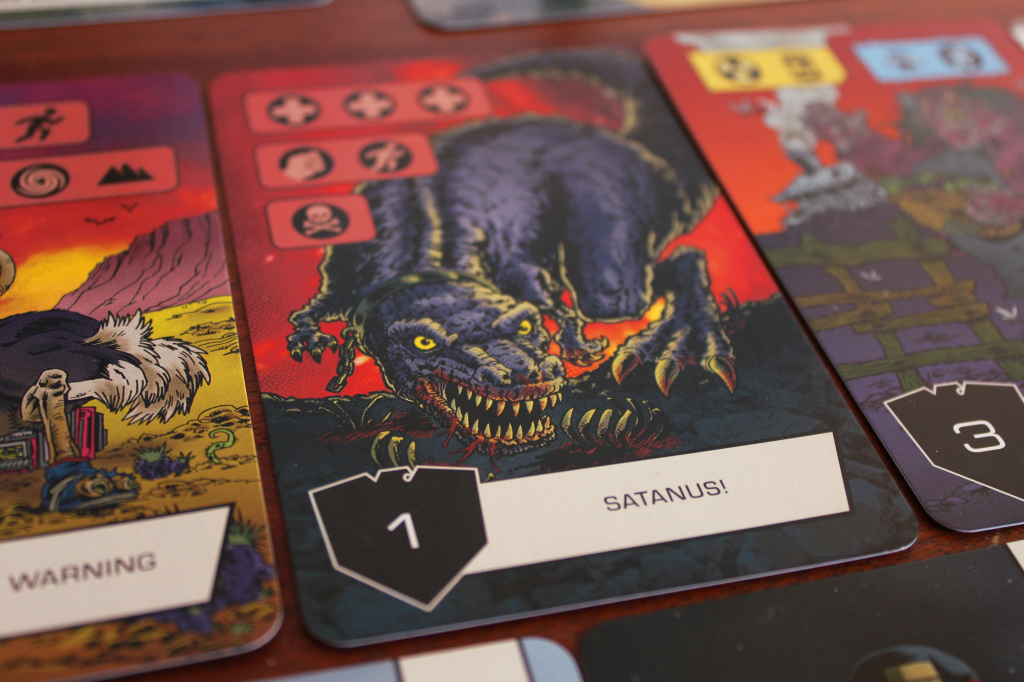
When your turn begins in earnest, you’ll encounter these cards from left to right, but the order they’re arranged is dictated by dusk and dawn setup each round. At dawn, you’ll arrange cards in numerical order, which doesn’t seem that terrible (you’ll say while peaking through your fingers) since it gives you a sliver of foresight as you lay the cards in the row. Whereas at dusk, cards are instead placed at the book ends of the row, which quickly becomes a logistical nightmare that my normal sized brain struggles to comprehend. The reason why these cards arrangement is so important is because the goal is to mitigate as much damage as possible so you don’t get squirted out the other end of the row like the last bit of toothpaste. Sometimes you’ll find precious resources like ammo and food, or best of all, a path forward to the next location, but most of the time, the Judges will become wounded, irradiated and fight their way out of encounters one at a time.
JD:TCE is an extremely challenging and intriguing puzzle. The game is essentially a gauntlet run through a harsh and unforgiving wasteland, and you have to make sure the Judges don’t hit too many rocks on their way down the hill. Lining up the cards in such a way that you aren’t dead by dawn is a Kasparov like quandary in itself, but fortunately there is a knack to it. Once you get used to the layout each round and which cards are the most dangerous, you start to see the signs, like a safe cracker carefully listening for pin tumblers to drop. Practice, memory and a dash of luck, are the main herbs in this spicy dish.

Although the puzzle IS the core feature to this game, one of the most striking things for me was how every card tells a story. The hazards on each encounter all make complete sense and often steer the player towards which direction they should take. You may stumble upon a wounded triceratops, but do you spend valuable ammo to put it out its misery and spend the time to prepare its remains as food, or do waste no time at all and move through it? That narrative cohesiveness and entertaining tasks gives this game just that extra bit of je ne sais quoi that makes it a solid gem. Do yourself a favour and get this one. Don’t think about it, just do it. It’s usually cheap and at the time of writing this review, it’s available from Osprey’s website for less than a tenner. So it’s a no brainer if you ask me.
Zulus on the Ramparts!
Some days I just get this hankering to play a war game. I wouldn’t necessarily consider myself a war gamer, but there is something incredibly alluring about their serious tone and beige colour palette. Lucky for me ‘Zulus on the Ramparts’ is a casual war gaming delight and could fit on any soloists shelf.

ZotR retells the story of the Battle of Rorke’s Drift in South Africa in 1879, which to this day, is one of the most successful defences in military history. To give a little context, the British had just suffered a massive defeat at Isandlwana, the first engagement of the Anglo-Zulu War, with nearly 1400 casualties at the hands of a Zulu army numbering of over 20000 warriors. The surviving troops retreated to nearby Rorke’s Drift, a mission station manned by 150 British troops and lead by Lieutenants Chard and Bromhead, and alerted the makeshift base that a contingent of Zulu Warriors was heading their direction. Deciding to stay, the British began fortifying the station with bags of corn around the perimeter. There they waited for the Zulu forces. The Zulu warriors were made up of 4 attacking groups, known as iButho’s and comprised of some 3000-4000 fighting men. With the Zulu forces vastly outnumbering the British, the attacks began in the late afternoon and didn’t cease until the early hours the next morning with the British managing to keep the the Zulu’s at bay by sticking to their guns (quite literary).

ZotR is one of Victory Points Games famed ‘States of Siege’ titles, which is a gloriously straightforward tower defence system. You’ll reveal tokens at the start of your turn that tell you which of the Zulu forces – the loins, chest, left or right horns – will move towards the centre of the mission station, and you must spend your turn performing actions like forming a reserve company or fetching ammo & water for the troops, while also firing a volley of attacks at the Zulu’s ranks by rolling handfuls of dice. Attacks that connect either drive the Zulu forces back or reduce their numbers. However, it only takes one iButho to break the back of the British forces. If any of the iButho’s make it to the Zulu Victory token in the centre of the board, the British lose. If on the other hand, the British can withstand the constant barrage of attacks until the relief column arrives in the morning, they will have survived as they did in real life.

This is a super exciting game that has a tremendous amount of card playing depth bubbling underneath its dice chucking surface. The main British protagonists – Lieutenant’s Chard and Bromhead – have such a marvellous synergy it’s hard not to cheer them on like they’re wrestling tag team. Chard helps you dig deeper into the deck and gets troops out FAST, while Bromhead is the go getter of the two and lets you commit more actions during your turn. The card play is so good in ZotR, I’ll often opt to play it over bigger games like Arkham Horror the card game. ZotR can be brutal at times, but thankfully the game comes with a slew of bonus cards that give you more defensive options. These are entirely optional so if you prefer the historically difficult version then you won’t be disappointed.

As a person who only flirts with war games on occasion, ZotR is perhaps one of the sweetest deals for casual players since the story is one for the most straight forward. You don’t have to worry about country spanning maps or moving hundreds of troops or complex military strategies or the socio-economic aspects of certain territories. There’s none of that. ZotR is a very easily digested story that invites the player to learn more when they’ve finished, which is exactly what I want from a war game – A compelling story that makes you want to discover more about a culture in a different time and place. A true gem in my opinion.
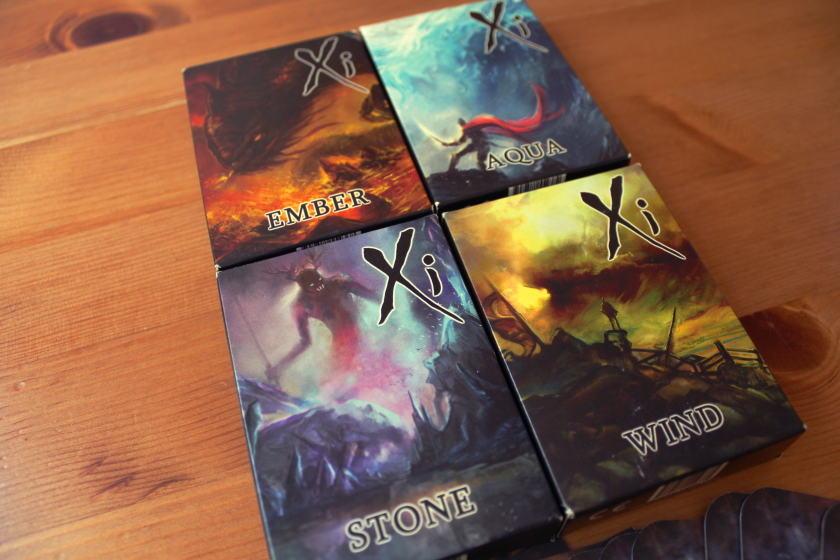









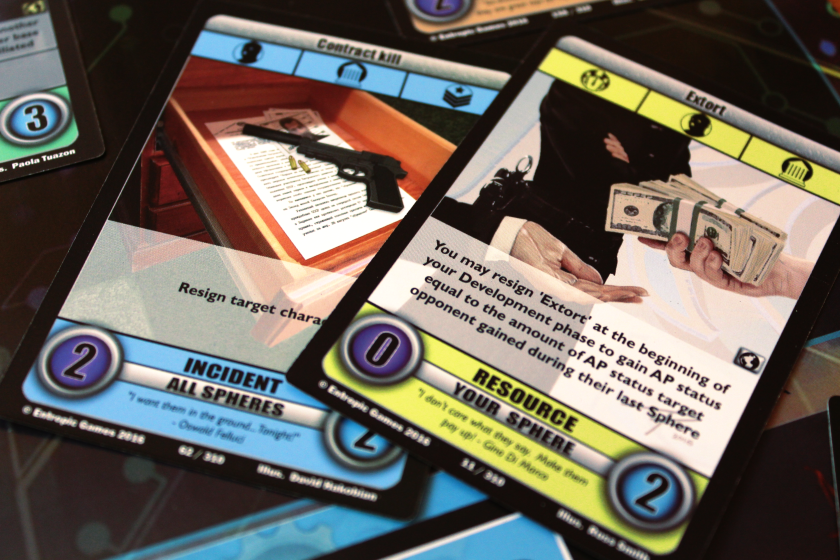




















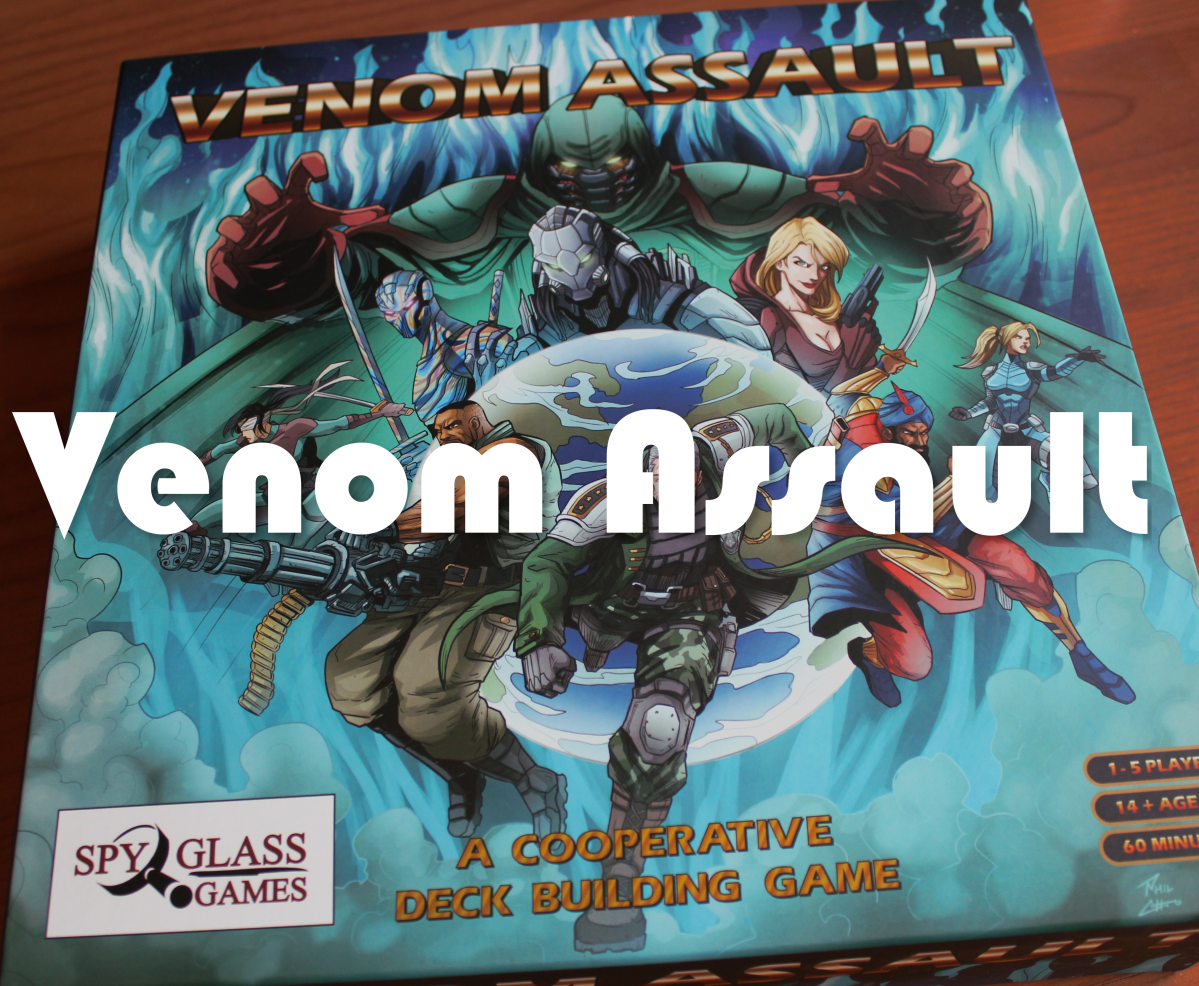







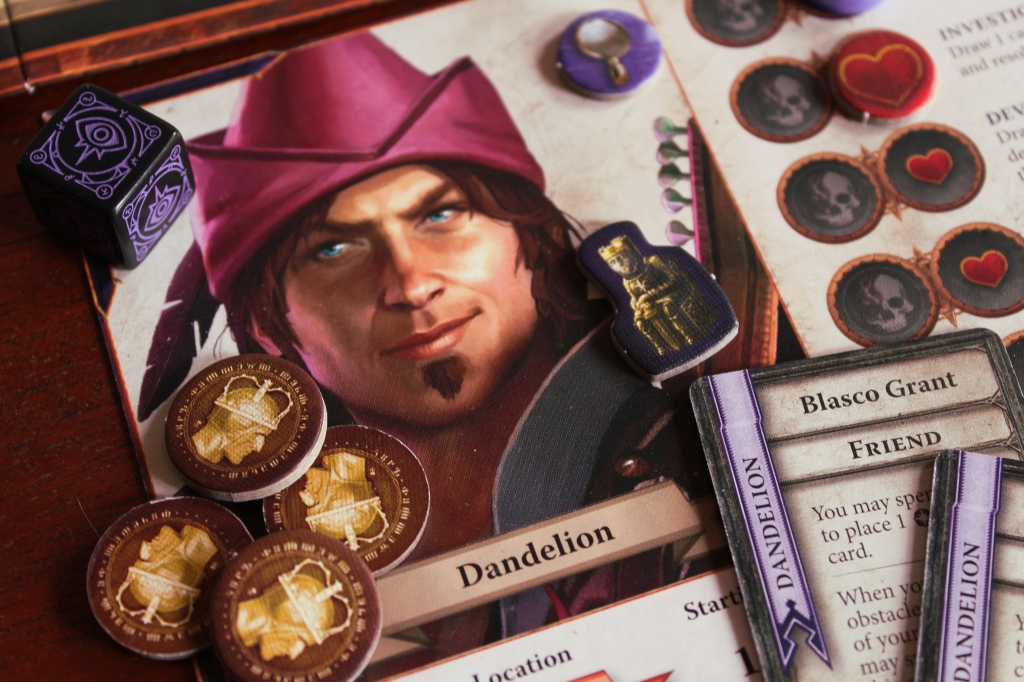


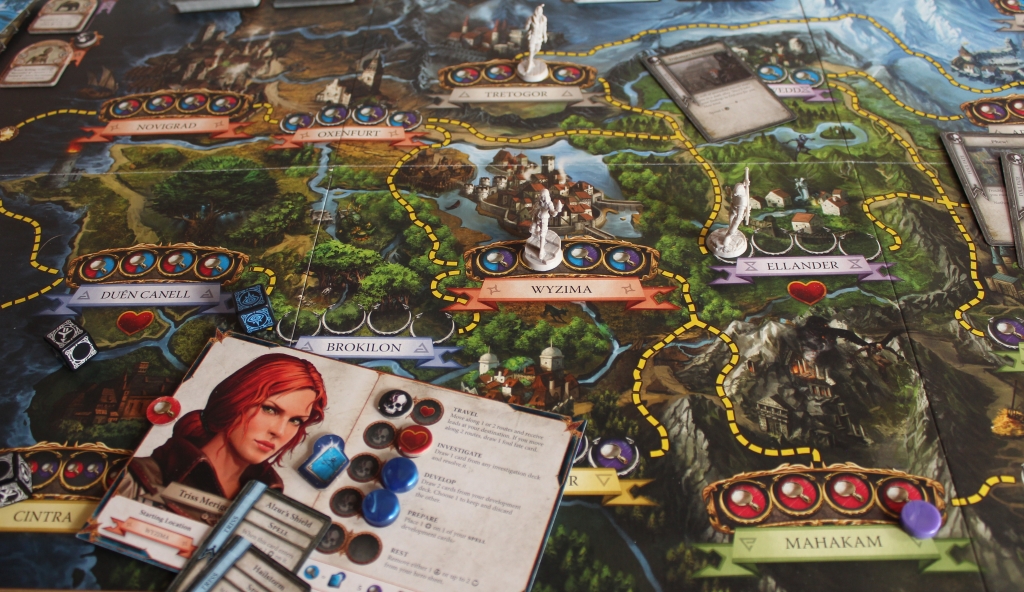





 Even if you’ve been living in a cave for the last 4 years and you’ve never heard of ‘The Resistance’, ‘Coup’ is a sublime game by itself. Its wickedly fast, super tense and just oh so exciting. When you’re holding on to your last card and the turn is going round, you’ll be frantically scheming trying to ready yourself for your next move. You’ve decided to bluff holding the Duke, which will gain you the 3 credits to pay for the Assassin that you are actually holding. Its finally your turn, you try to sneak those precious credits in unnoticed. As your fingertips just touch the prize, you think “YES! I’ve done it. No one will suspect a thing”. You start to slink the money towards you when you hear the challenge from across the table, “Like Hell you’re the Duke! I’ve got the Duke”. You can’t show weakness but your backs up against the wall, inside your screaming, “WHAT AM I GOING TO DO???” You play it cool, time to show them what you’re made of. “Are you sure you want to make that call?”, a cold look of steel about your face, but really your legs are like jelly jumping castles. Your challenger hesitates, not wanting to lose their last card in a rash decision. He begins a retort but you cut it short, “Fine, just means one less of you I need to eliminate”. You reach for you card confidently, ready to flip it over, it’s do or die anyway, then you hear the withdrawal, “Alright. Take the money…this time”. You think to yourself, “Yes! A life-line. Now all I have to do is…”, the person next to you chucks 7 credits your way, “I’m couping you. You’re dead”. Your head drops between your chest and the table erupts into laughter. This is the sort of entertainment you just can’t put a price on. ‘Coup’ is an absolutely awesome game. Get it or you’ll get left behind.
Even if you’ve been living in a cave for the last 4 years and you’ve never heard of ‘The Resistance’, ‘Coup’ is a sublime game by itself. Its wickedly fast, super tense and just oh so exciting. When you’re holding on to your last card and the turn is going round, you’ll be frantically scheming trying to ready yourself for your next move. You’ve decided to bluff holding the Duke, which will gain you the 3 credits to pay for the Assassin that you are actually holding. Its finally your turn, you try to sneak those precious credits in unnoticed. As your fingertips just touch the prize, you think “YES! I’ve done it. No one will suspect a thing”. You start to slink the money towards you when you hear the challenge from across the table, “Like Hell you’re the Duke! I’ve got the Duke”. You can’t show weakness but your backs up against the wall, inside your screaming, “WHAT AM I GOING TO DO???” You play it cool, time to show them what you’re made of. “Are you sure you want to make that call?”, a cold look of steel about your face, but really your legs are like jelly jumping castles. Your challenger hesitates, not wanting to lose their last card in a rash decision. He begins a retort but you cut it short, “Fine, just means one less of you I need to eliminate”. You reach for you card confidently, ready to flip it over, it’s do or die anyway, then you hear the withdrawal, “Alright. Take the money…this time”. You think to yourself, “Yes! A life-line. Now all I have to do is…”, the person next to you chucks 7 credits your way, “I’m couping you. You’re dead”. Your head drops between your chest and the table erupts into laughter. This is the sort of entertainment you just can’t put a price on. ‘Coup’ is an absolutely awesome game. Get it or you’ll get left behind.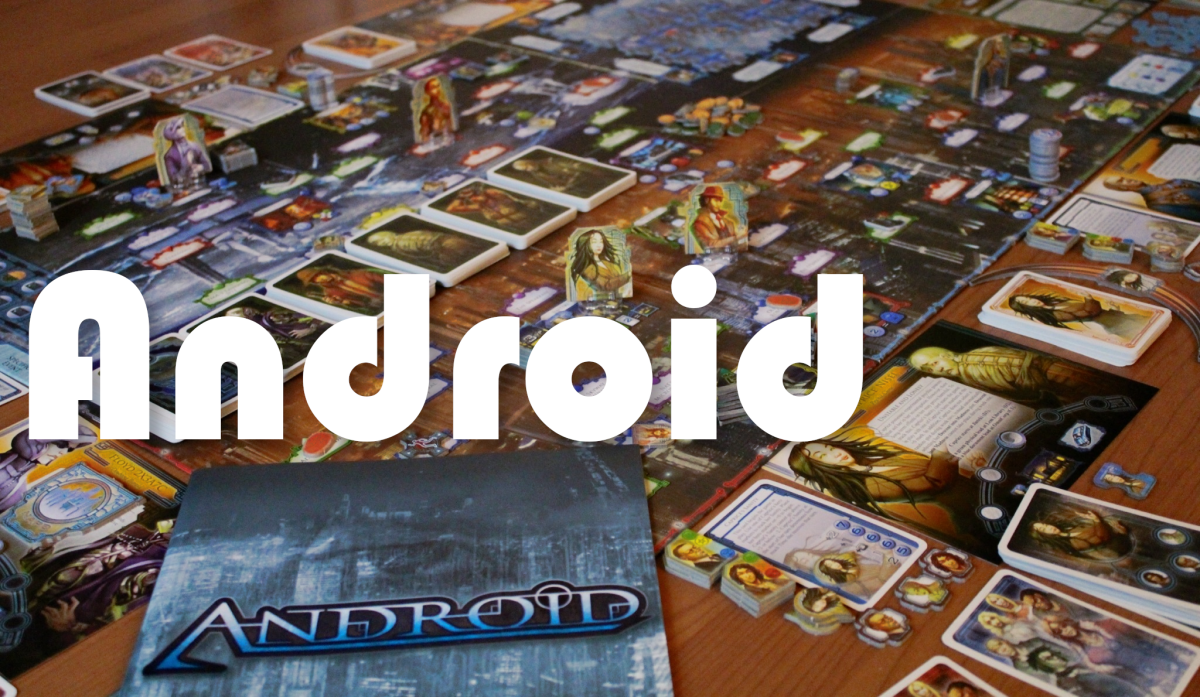
 The game possesses such varied mechanics that interleave with one another. Each layer adds different strategies you can employ to win the game. Firstly you can attempt to pin the murder on a suspect by mounting evidence against them, or as. While your detective chases up leads around New-Angeles, you have the option to uncover evidence. Don’t worry; you won’t be shouting obscenities at each other just yet. That’ll come later. You’ll take a token from the evidence pool and place it on a particular suspect involved in the murder case. Depending on the value of the token, it’ll determine if the suspect is innocent or guilty. Usually, the point of the game where derogatory utterances begin is when a player places evidence on a suspect, and you refer to the 2 “hunch cards” you were dealt in the beginning of the game, one showing you a guilty suspect the other an innocent citizen, and of course, said player is building a case against your innocent hunch. Or at least who you believe to be. After all, you’re only going by your ‘dick’ instincts.
The game possesses such varied mechanics that interleave with one another. Each layer adds different strategies you can employ to win the game. Firstly you can attempt to pin the murder on a suspect by mounting evidence against them, or as. While your detective chases up leads around New-Angeles, you have the option to uncover evidence. Don’t worry; you won’t be shouting obscenities at each other just yet. That’ll come later. You’ll take a token from the evidence pool and place it on a particular suspect involved in the murder case. Depending on the value of the token, it’ll determine if the suspect is innocent or guilty. Usually, the point of the game where derogatory utterances begin is when a player places evidence on a suspect, and you refer to the 2 “hunch cards” you were dealt in the beginning of the game, one showing you a guilty suspect the other an innocent citizen, and of course, said player is building a case against your innocent hunch. Or at least who you believe to be. After all, you’re only going by your ‘dick’ instincts. However you need to keep hunches secret for as long as possible. If your opponents find out who you’re building a case against/in favour of, they might employ “Humanity Labor” to put hits out on your suspects. Once there are 3 hits on a suspect, he/she is dead, removed from the game and potentially lost a player a ton of precious victory points. That’s not the only cuss inducing method in your quest for evidence though. There are also these nasty little tokens called “alibis”, which as we all know from day time soap operas, seriously derail the plot line. Alibis have the power to “reverse” evidence, as well as synapse with your brain, forcing you to shout out random portmanteau expletives. Subsequently, the word “funt” now adds colour to many more situations in our daily lives. Thanks Android! Surprisingly though, building a case against a suspect isn’t the most important thing on the board, although it is a really fun part of the game. Back and forth bluffing will potentially have you offload evidence on one suspect as each player battles for their hunch card, only to have him eventually assassinated! Meanwhile, the unsuspecting mining clone ‘Mark Henry’, sits with +1 point in his case file, making him the guilty party and netting another player 15 valuable victory points.
However you need to keep hunches secret for as long as possible. If your opponents find out who you’re building a case against/in favour of, they might employ “Humanity Labor” to put hits out on your suspects. Once there are 3 hits on a suspect, he/she is dead, removed from the game and potentially lost a player a ton of precious victory points. That’s not the only cuss inducing method in your quest for evidence though. There are also these nasty little tokens called “alibis”, which as we all know from day time soap operas, seriously derail the plot line. Alibis have the power to “reverse” evidence, as well as synapse with your brain, forcing you to shout out random portmanteau expletives. Subsequently, the word “funt” now adds colour to many more situations in our daily lives. Thanks Android! Surprisingly though, building a case against a suspect isn’t the most important thing on the board, although it is a really fun part of the game. Back and forth bluffing will potentially have you offload evidence on one suspect as each player battles for their hunch card, only to have him eventually assassinated! Meanwhile, the unsuspecting mining clone ‘Mark Henry’, sits with +1 point in his case file, making him the guilty party and netting another player 15 valuable victory points.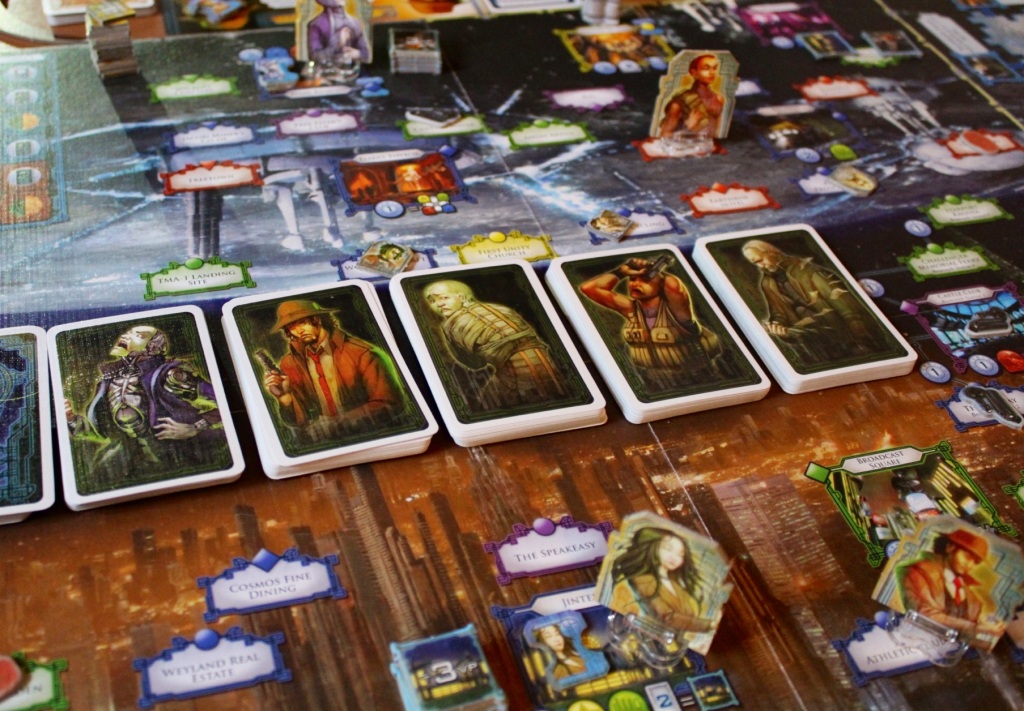 Raymond enters a seedy club on the south side of town. He feels the eyes of every patron scanning him up and down. They’re wondering if Raymond is going to kick up a stink and nose around in things that should maybe be left well alone, or is he going to just be the predictable jaded alcoholic cop that he is and take a seat at the bar. You play one of your “light” cards. “Hey, didn’t you fly in the 21rst division?” Ray cuts through the tectonic beat of the clubs sound system and turns to the sound of the voice. He sees someone vaguely familiar to him. It’s an old war buddy he used to fly with. Rather than make a fuss or drown his sorrows at the bottom of a bourbon alone, Ray pulls up a seat, places his order with the waitress and begins to reminisce about the good ‘ol days. The guy gives Ray a free “dropship pass” and Raymond gains 1 GOOD baggage for entering a “nightlife” location during this plot line. Sweet. – (This was actual gameplay by the way)
Raymond enters a seedy club on the south side of town. He feels the eyes of every patron scanning him up and down. They’re wondering if Raymond is going to kick up a stink and nose around in things that should maybe be left well alone, or is he going to just be the predictable jaded alcoholic cop that he is and take a seat at the bar. You play one of your “light” cards. “Hey, didn’t you fly in the 21rst division?” Ray cuts through the tectonic beat of the clubs sound system and turns to the sound of the voice. He sees someone vaguely familiar to him. It’s an old war buddy he used to fly with. Rather than make a fuss or drown his sorrows at the bottom of a bourbon alone, Ray pulls up a seat, places his order with the waitress and begins to reminisce about the good ‘ol days. The guy gives Ray a free “dropship pass” and Raymond gains 1 GOOD baggage for entering a “nightlife” location during this plot line. Sweet. – (This was actual gameplay by the way)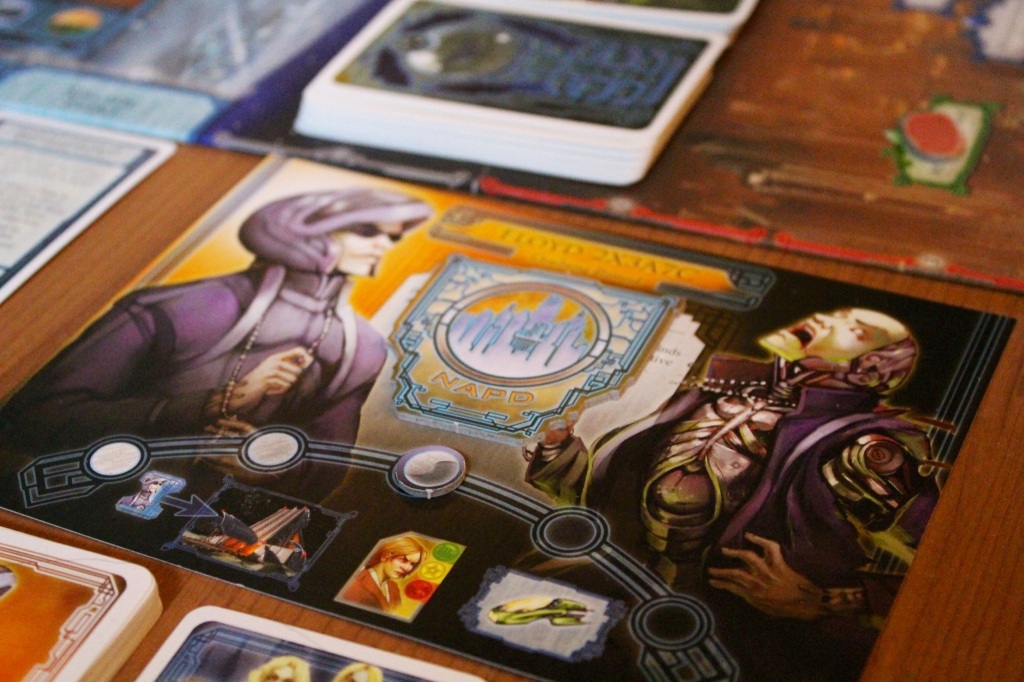 The bioroid Floyd overrides one of his prime directives in the hopes of getting a deceitful lead on the case. You play one of Raymonds “Haunted by the Past” cards. By now Ray has had a few too many drinks anyway. He barely manages to stand himself up with some semblance of dignity and stumbles into the clubs bathroom where the music is less deafening. After splashing some water on his face he takes a long deep gaze at his reflection in the mirror. The voice in his head starts to murmur as it normally does. The memories come flooding back and all of a sudden Raymond can’t breathe. A hand reaches out to help, “Hey buddy, you okay?” In a panic Raymond lashes out and starts throwing punches. Flailing in a drunken stupor like an unbalanced spinning top, and then darkness. The next thing Raymond sees is his own two feet staring back at him, as he slowly realises he’s waking up in a dumpster in the alley out back. He gains 2 “bad baggage” for fighting like a chimp. Bollocks.
The bioroid Floyd overrides one of his prime directives in the hopes of getting a deceitful lead on the case. You play one of Raymonds “Haunted by the Past” cards. By now Ray has had a few too many drinks anyway. He barely manages to stand himself up with some semblance of dignity and stumbles into the clubs bathroom where the music is less deafening. After splashing some water on his face he takes a long deep gaze at his reflection in the mirror. The voice in his head starts to murmur as it normally does. The memories come flooding back and all of a sudden Raymond can’t breathe. A hand reaches out to help, “Hey buddy, you okay?” In a panic Raymond lashes out and starts throwing punches. Flailing in a drunken stupor like an unbalanced spinning top, and then darkness. The next thing Raymond sees is his own two feet staring back at him, as he slowly realises he’s waking up in a dumpster in the alley out back. He gains 2 “bad baggage” for fighting like a chimp. Bollocks. Even if you’re not a storyteller kind of group, there is a THIRD way to play (and possibly the highest scoring yet most understated in the rules). In the top corner of the board is a puzzle board, and instead of placing evidence on a suspect after following a lead, you have the option to uncover a piece of the conspiracy. What this means is that you are trying to build links between some of the corporations in the game with the current murder case. “There’s more to this case. I just know it. Someone else was involved.” You place a puzzle piece down and try to connect a continuous line between the corporation spaces on the outside of the puzzle. Unlocking these can fundamentally change who will win the game. Sometimes a space grants that a certain currency token count towards your victory points or maybe it affects the results of plots, or maybe you get to place a hit for free, or maybe…There’s a lot of options here and having a good look at the puzzle will greatly improve your chances at winning. Not merely because of the links you’re trying to uncover, but also because there is a second dimension to the puzzle…yup, you guessed. That’s right, bingo…No, really. It’s bingo! This can net you a whole mess of points, but if you focus too much of your time on trying to uncover the conspiracy, you’ll have no time to chase any real leads on the case and your left holding a crumpled, sweaty bunch of newspaper clippings, with indecipherable hieroglyphics hastily scribbled on them, trying to convince the commissioner that it’s all connected to lizard men, screaming “Can’t you see?!?! There! It’s in the numbers! It’s so obvious!”
Even if you’re not a storyteller kind of group, there is a THIRD way to play (and possibly the highest scoring yet most understated in the rules). In the top corner of the board is a puzzle board, and instead of placing evidence on a suspect after following a lead, you have the option to uncover a piece of the conspiracy. What this means is that you are trying to build links between some of the corporations in the game with the current murder case. “There’s more to this case. I just know it. Someone else was involved.” You place a puzzle piece down and try to connect a continuous line between the corporation spaces on the outside of the puzzle. Unlocking these can fundamentally change who will win the game. Sometimes a space grants that a certain currency token count towards your victory points or maybe it affects the results of plots, or maybe you get to place a hit for free, or maybe…There’s a lot of options here and having a good look at the puzzle will greatly improve your chances at winning. Not merely because of the links you’re trying to uncover, but also because there is a second dimension to the puzzle…yup, you guessed. That’s right, bingo…No, really. It’s bingo! This can net you a whole mess of points, but if you focus too much of your time on trying to uncover the conspiracy, you’ll have no time to chase any real leads on the case and your left holding a crumpled, sweaty bunch of newspaper clippings, with indecipherable hieroglyphics hastily scribbled on them, trying to convince the commissioner that it’s all connected to lizard men, screaming “Can’t you see?!?! There! It’s in the numbers! It’s so obvious!” Therein lays its main points of criticism though. Yes it’s a big ‘ol fat ass of a game, but just like Jabba-the-Hut, it has an endearing quality. The people, who enjoy this game, will almost always say it is a masterpiece. I understand where the criticism comes from though. Android is like a pink elephant in the board game world. Not in the sense that it sticks out (Because that’s impossible when your hash-tag is #Android) but rather it’s both a fascinating & unique creature, as well as clumsy & frustrating. As much as I didn’t want to talk about the theme since it’s the most obvious draw of the game, I will say that I think it’s not the theme in itself that people love, nor is it the mechanical elements that give the game colour, it’s the fact that the game needs to be played or approached as if it were a giant dystopian rubix cube. For us it’s HOW the mechanics are played out in relation to each other that makes it fit so well with the theme. The world of Android feels rich and therefore should be interacted with in a complex manner. If there was a stripped down version with streamlined rules, the glue that holds it all together would start to disintegrate and the experience would just fall apart. Despite its caveats you can net yourself a copy on Amazon for nearly NOTHING!! It would be foolish not to give it a go….and X-mas is around the corner.
Therein lays its main points of criticism though. Yes it’s a big ‘ol fat ass of a game, but just like Jabba-the-Hut, it has an endearing quality. The people, who enjoy this game, will almost always say it is a masterpiece. I understand where the criticism comes from though. Android is like a pink elephant in the board game world. Not in the sense that it sticks out (Because that’s impossible when your hash-tag is #Android) but rather it’s both a fascinating & unique creature, as well as clumsy & frustrating. As much as I didn’t want to talk about the theme since it’s the most obvious draw of the game, I will say that I think it’s not the theme in itself that people love, nor is it the mechanical elements that give the game colour, it’s the fact that the game needs to be played or approached as if it were a giant dystopian rubix cube. For us it’s HOW the mechanics are played out in relation to each other that makes it fit so well with the theme. The world of Android feels rich and therefore should be interacted with in a complex manner. If there was a stripped down version with streamlined rules, the glue that holds it all together would start to disintegrate and the experience would just fall apart. Despite its caveats you can net yourself a copy on Amazon for nearly NOTHING!! It would be foolish not to give it a go….and X-mas is around the corner.